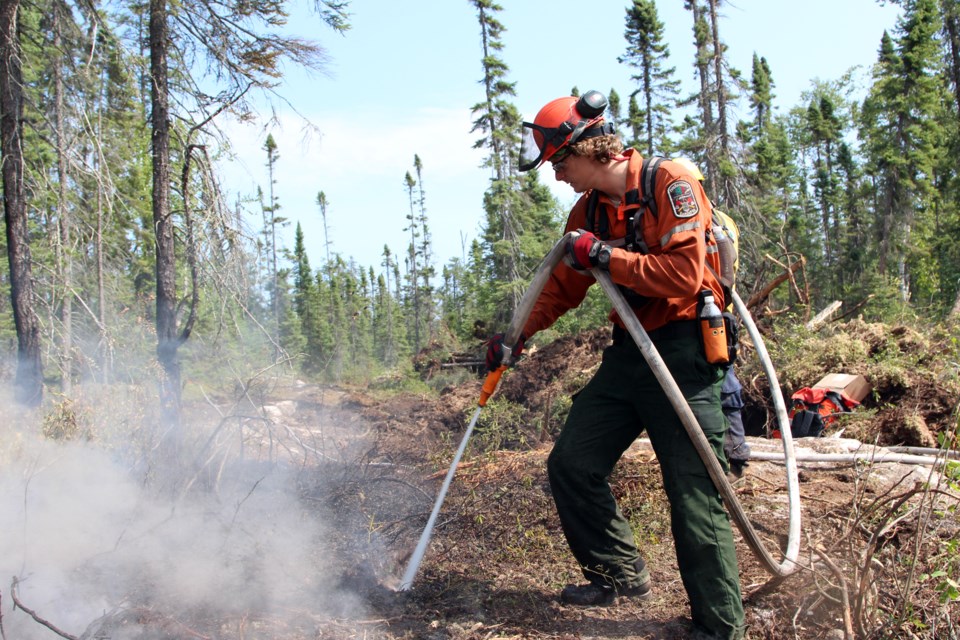THUNDER BAY - With temperatures rising and people eager to enjoy some time outdoors, officials with the Ministry of Natural Resources and Forestry are urging the public to be extremely careful and abide by the fire ban to avoid a costly and dangerous mistake.
“The condition in the forests around Thunder Bay is explosive right now and the slightest little mistake could be costly,” said Garry Harland, fire management supervisor with the Ministry of Natural Resources and Forestry.
The entire Northwestern Ontario region is currently a restricted fire zone and a fire ban remains in effect for the city of Thunder Bay and district as dry, windy conditions are making the forest floor more susceptible to fires.
According to Harland, forests still contain a lot of fine fuels that are common in the spring, such as twigs, dead leaves, and dry grass.
“Not much of the undergrowth has flushed out yet,” he said. “So the canopies are open, the sun is getting through, the wind is getting through into the forest right now, so we have quite a hazard in the Thunder Bay basin at this time.”
Late last week, the region did see approximately two millimeters of rain, though most of the precipitation fell west of the Thunder Bay district in the area of Dryden. In order to alleviate the fire hazard, a lot more precipitation will need to fall.
“We would like to see at least half an inch or 15 millimeters of rain in a 48 hour period,” Harland said. “A slow drenching rain. We really need that forest to flush out, the canopy to close off with the leaves, and the green to push us through the long grasses and then that will put us in a good state for the rest of the summer.”
But fire is a difficult thing to predict and with forecasts this summer calling for a hotter season than last year, that doesn’t necessarily mean the fire risk will be elevated for the next four months.
“Everything changes every time there is a rain event,” Harland said. “I’ve been around too long to start predicting what kind of fire season is going to be in a couple of weeks from now. Right now we have to get through this short term period and see what happens.”
There are several fires burning throughout the region, including one 7.2 hectares in size northeast of Thunder Bay. A fire also crossed into Northern Ontario from Manitoba on Tuesday, which is also having a difficult fire season along with Saskatchewan.
Even the city of Thunder Bay and surrounding municipalities have been battling numerous grass fires this month and Harland said everyone could use a break.
“Our municipal partners have been very busy with grass fires and they are getting tired of it and so are we,” he said. “It would be nice to get a good half inch of rain here and put an end to this.”
And in order to prevent other fires from starting, Harland is reminding the public to respect the fire ban and not conduct any open air burning. Ignoring the fire ban is not only dangerous, it can be costly, with individuals facing fines up to $25,000 for starting a fire and $500,000 for corporations.
“There’s lots of fines and there’s lots of ways of recovering costs from people who make those mistakes,” Harland said. “It’s not a time to be taking a chance with fires that’s for sure.”
